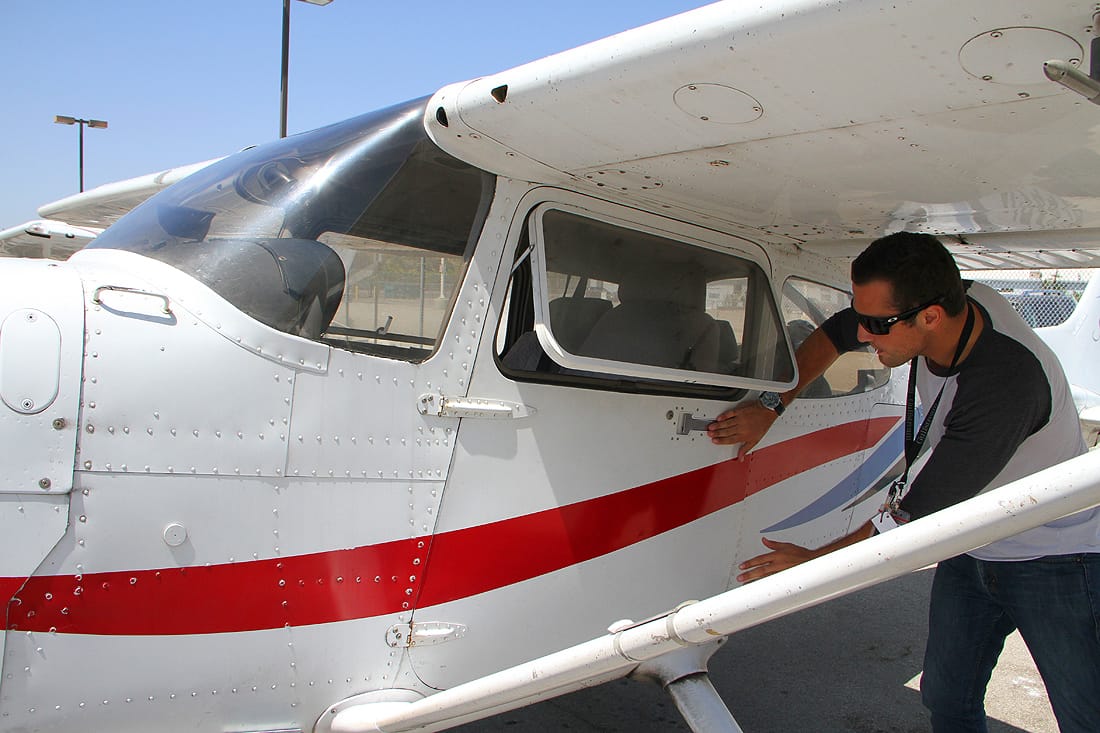
CITY HALL — The City Council voted unanimously to approve a sharp hike in landing fees Tuesday night that pro-aviation opponents call a thinly-veiled attempt to shutter Santa Monica Airport.
The increase in fees would more than double the cost of landing an aircraft at SMO from the current $2.07 per 1,000 pounds to $5.48 per 1,000 pounds in the first year, an amount that would creep up to $5.89 by 2016.
Perhaps more dramatically, the fee would apply to airplanes housed at the airport for the first time, adding between $10 and $15 to the cost of every operation undertaken by student pilots that practice take offs and landings, sometimes 10 times in an instruction session.
The increase would take affect Aug. 1. The City Council is considering an exemption for certain kinds of organizations, like Angel Flight, which marshals volunteer pilots to chauffeur indigent patients who cannot afford transportation to their medical appointments in other cities.
What city officials have represented as an attempt to force SMO users to pay their fair share of upkeep of the facility — which is expected to cost the General Fund $1.7 million in the coming fiscal year alone — airport supporters consider a usurious fee that aims to shoot local businesses out of the sky.
The increase would force flight schools out of business, an impact which would ripple through the rest of the aviation community at SMO, said Kim Davidson, owner of an aircraft repair facility.
"I have 10 employees. More than half are married, and they have children," Davidson said. "I just want to emphasize that this will greatly affect me."
Some called for audits of city accounts to justify the increase, and others promised legal action.
Private entities can, and have, taken complaints about regulations at SMO through a process that ended with the Federal Aviation Administration and resulted in a lengthy, expensive court battle that Santa Monica ultimately lost. That's led to a "look before you leap" approach to airport policy that residents impacted by SMO find cautious to a fault.
The public report that accompanied the City Council's discussion, however, seemed confident that courts would uphold the fees.
Other local airports have shut down in recent years, most famously Meigs Field in Chicago, which Mayor Richard Daley shuttered.
The public hearing, for which more than 100 people submitted speaking requests, stretched into the 10 p.m. hour, and was almost evenly split between pro and anti-aviation interests.
An overflow room dominated by those against the airport let up cheers every time an aviation business cried poverty or expressed fear their livelihood would be lost under the weight of the new regulations. Many of them live in Santa Monica, Mar Vista or West Los Angeles and feel that their homes have been taken from them by the noise and what they fear is dangerous pollution emitted by the airport.
More cynical airport supporters suggest the desire for closure has more to do with economic rather than environmental concerns, a perception likely reinforced by a realtor who estimated the home values would go up between 25 and 100 percent if the airport closed.
Those in the lobby of City Hall have had a lot to be happy about in recent days as momentum against the airport appears to be growing.
They've cemented support from elected officials like State Sen. Ted Lieu, and Rep. Henry Waxman personally attended a forum held April 27 by the Venice Neighborhood Council to rally SMO opponents.
Listening to the commission
And, for the first time, the council told city officials to look into a series of recommendations by the Airport Commission, an active body dominated by Sunset Park residents, which have otherwise been shelved as the process to examine the future of the airport continued.
Those suggestions included ceasing the sale of aviation fuel and ending leases with businesses that negatively impact the community, but most dramatic would be the removal of an 18-acre parcel owned by City Hall that would cut down on runway length and prevent large planes from landing at the airport.
Commissioners held that much of that could happen as soon as July 1, 2015, when a 1984 agreement between City Hall and the FAA expires.
Council members argued that the increase in fees was part of an ongoing effort by City Hall to recoup the cost of the use of municipal property from those that benefit from it. They pointed to recent efforts to regulate physical trainers in public parks, and City Manager Rod Gould hinted at a review of other fees around budget time that could raise as much as $1 million for city coffers.
"This is not a subterfuge to close the airport. It has to do with bringing budgetary balance back to the Airport Fund so taxpayers don't have to subsidize for operations or capital expenditures," said Councilmember Gleam Davis.
Council members also pushed for an investment in muffler technology to try to reduce the noise that residents hear as small flight school planes fly over even more, and told city officials to move forward with other methods of reducing the impact of the airport on the neighbors even as they determine what the options for SMO are going forward, be it reduction of operations or outright closure.
There was consensus on one point; the status quo is no longer acceptable at SMO.
"From my point of view, I don't think we can leave it as it is," City Councilmember Bob Holbrook said. "We have to make changes. We have to move forward. I can't imagine us adopting a policy or point of view that nothing should change."
ashley@www.smdp.com

